Liquid fertilizer is a great way to provide nutrition for your bonsai. I’ve been using fish-based fertilizers for years and although it’s smelly, it’s effective and offers control when I want to limit how much fertilizer each tree gets.

Fish emulsion
While it’s easy to dilute concentrated fertilizer and apply it to your bonsai, there are three things you can do to fertilize more effectively.
- Lightly water before applying fertilizer
- Stop fertilizing before fertilizer begins to run out of the drainage holes
- Lightly water after applying liquid fertilizer
The most common reason offered for watering before fertilizing is to prevent fertilizer burn. I actually haven’t seen much fertilizer burn caused by fertilizing dry trees, but there is still good reason to water lightly first.
You may have noticed that the water doesn’t always soak into the soil evenly. Some areas of the rootball may need several passes before they get wet (see “Summer watering tip” for details). If you pour liquid fertilizer directly onto dry soil, the fertilizer may not reach all of the rootball before it begins to drain out of the pot. By watering lightly first, the water can wet the soil which will help the fertilizer soak in evenly.

Watering before fertilizing
Once the soil is wet, it’s time to apply the fertilizer. The idea behind the second tip to stop fertilizing before the fertilizer runs out of the pot is to avoid wasting fertilizer.
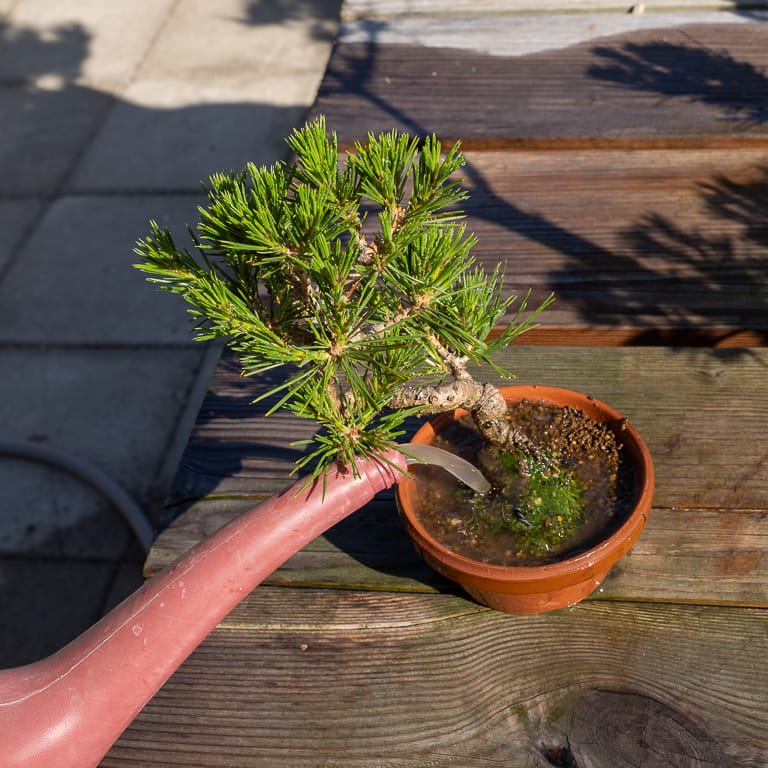
Applying fertilizer
Foliar fertilizing, by the way, works, and is a great option for trees with few or weak roots.
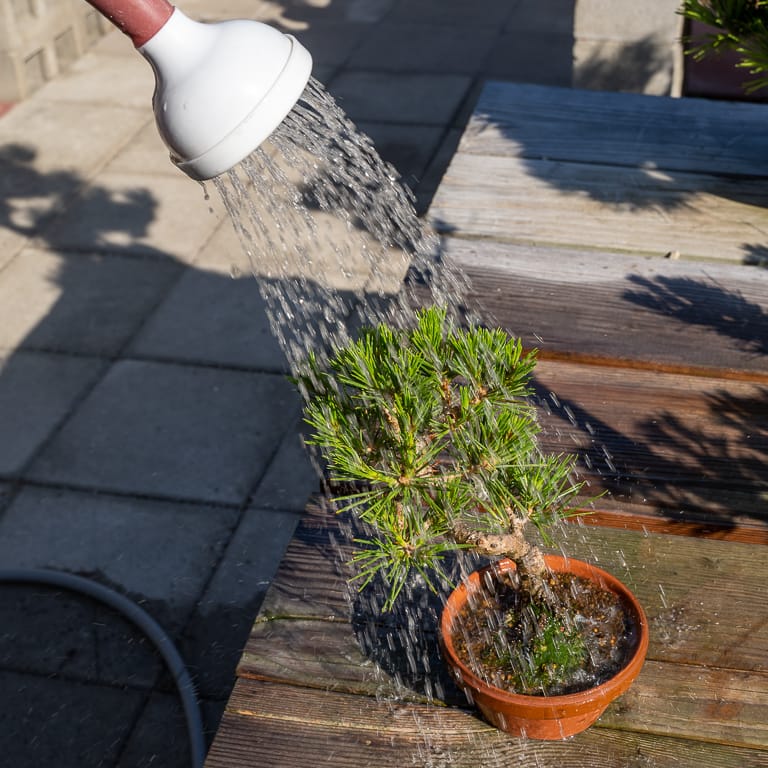
Foliar fertilizing
The third tip is to lightly water after applying fertilizer. The main benefit of doing this is to wash excess fertilizer away from foliage and from the lip of the pot.
Chemical fertilizers may not leave much of a trace after application, but organics like fish-based fertilizers do, especially if additional nutrients like iron are added to the mix.
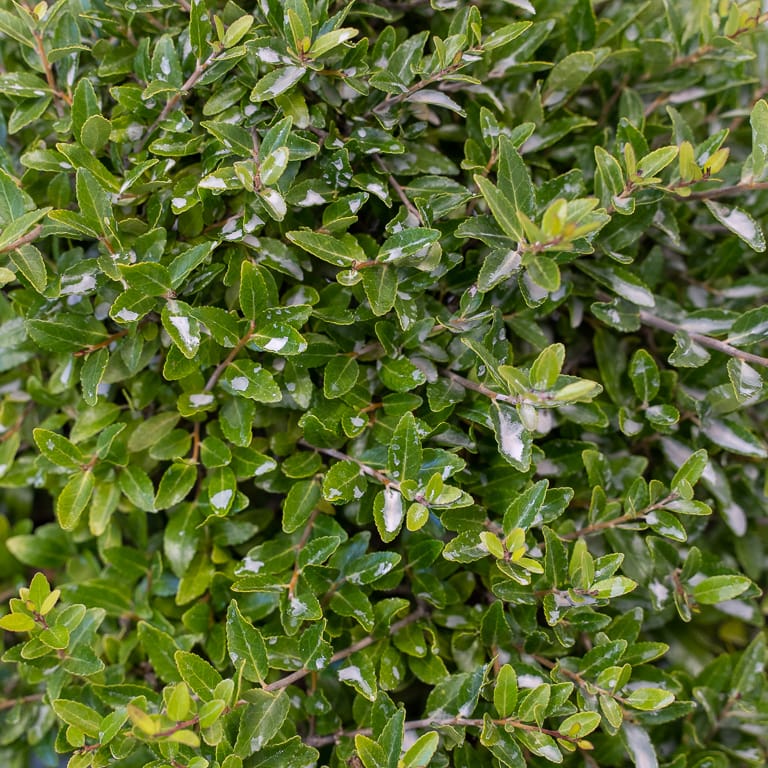
Fertilizer residue on holly leaves
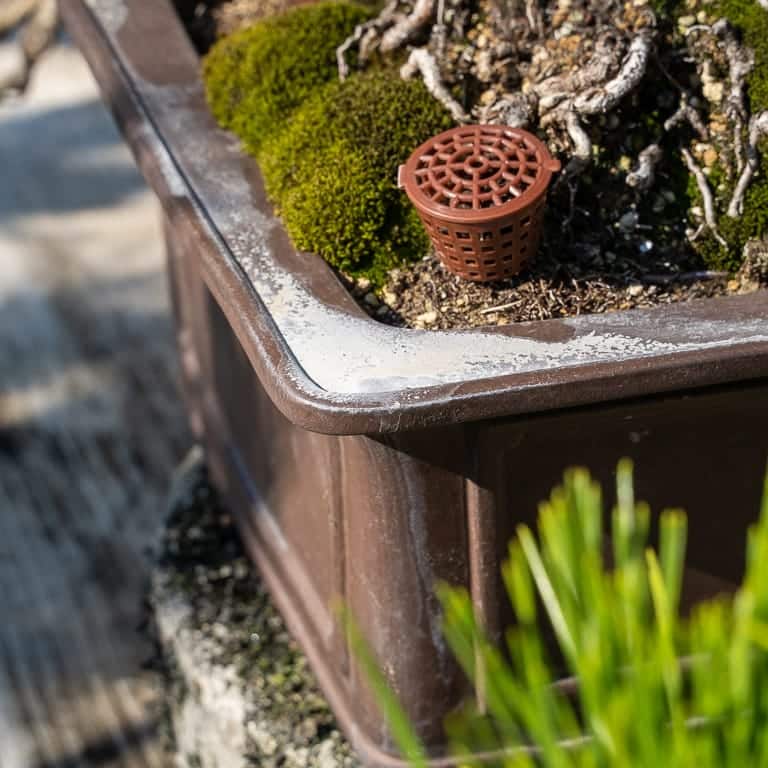
Fertilizer residue on the pot
Watering after fertilizing may also cut down on the smell when using pungent fertilizers like fish emulsion.
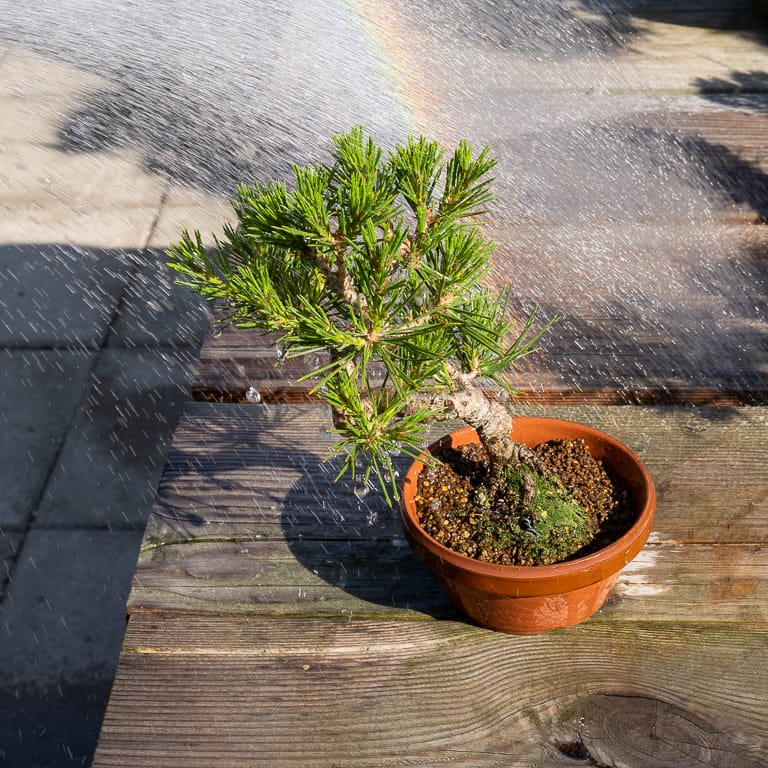
A single pass with the hose to water in the fertilizer
For general information about fertilizing bonsai, see “How to fertilize bonsai,” part of the Beginner Series of articles designed to get new enthusiasts up to speed quickly.
Subscribe to Bonsai Tonight
New Posts Delivered Every Tuesday and Friday
Rick says
Hey Jonas,
I noticed in one of your posts, that the fish emulsion looked thick like it wasn’t diluted. I’d have to look back for the post it was in. Is there a reason why it looked thick? Do you not always dilute?
Jonas Dupuich says
Hi Rick – great catch! I’ve posted photos of much less diluted fish emulsion. For many years I applied it heavily. These days I typyically use the standard dilution.
Alejandro Castro says
Excelente información. GRACIAS.
Lee Hardt says
Hey Jonas@!
Do you use emulsion or hydrolysate? Just curious. The age old debate is a curious one to me. I personally believe that the end product is denatured proteins in all processes(even using manure), so does it truly make a difference? Maybe in the working window,hmm.
I’m a big fan of organic and chemical fertilizers, there is a place for both I believe. I’m not a fan of the urea based products, due to the nature of urea to become NH3.(Talk about Ph issues)( in a pot). However, I do use Dana Grow on my pines, I believe it helps them stay that deep blue green color, somehow,lol
Great read,
L~
Jonas Dupuich says
Hi Lee! I use emulsion, haven’t tried the hydrolysate yet. There’s likely a way to test the difference between the two, but I have yet to see indications that the effect is dramatically different – it’s stuff that microbes break down. Doses of chemical fertilizers definitely makes a difference, and it can be a nice supplement to an otherwise organic approach.